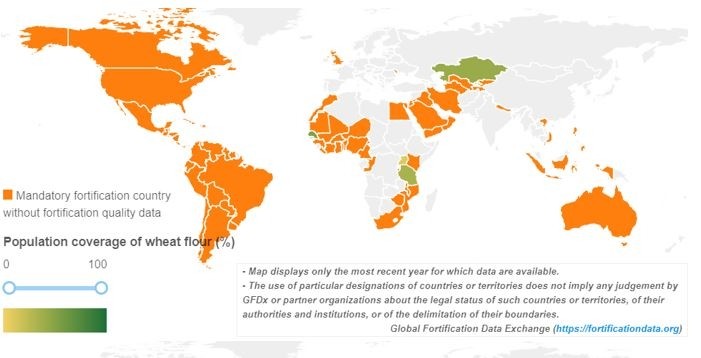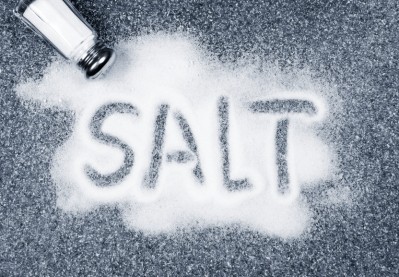Data visualisation tool translates policy into action

The data visualisation tool used by the Global Fortification Data Exchange (GFDx) reveals that 137 of 196 countries mandate food fortification of at least one food.
Meanwhile, GFDx identify 68 countries that mandate the fortification of two foods. These include European countries such as the United Kingdom, Moldova and Kosovo (salt and wheat flour).
However, of the 68 countries that commonly fortified foods such as oil, wheat, and maize flour, only 51%, 26%, and 4%, of people respectively on average receive these foods. The rest are potentially vulnerable to deficiency in critical nutrients.
“GFDx isn't just a data tool, it's an advocacy tool, to drive demand and political will,” said Jessica Fanzo, Bloomberg distinguished associate professor of global food and agricultural policy and ethics at Johns Hopkins University, and co-Chair of the 2018 Global Nutrition Report.
“It's designed for the right audience: decision makers. As a country leader, if you can see that a critical vitamin is reaching people in a neighboring country, but not your own? This has the potential to be highly motivating.”
Food staple fortification
Data compiled by GFDx tracks and maps global progress towards the fortification of major food staples such as oil, rice, salt, and maize and wheat flour.
GFDx - a nutrition coalition comprised of the Food Fortification Initiative, Global Alliance for Improved Nutrition, Iodine Global Network, and Micronutrient Forum, aggregates and visualizes data from every country from 1940 to the present.
In its latest version, launched on the 28 February reports of population coverage of food fortification are now available as are food quality, monitoring protocols, food availability and intake, and legislation and standards.
With these data visualisations, the tool generates custom maps, charts, and tables, and options to download data for offline analysis.
"GFDx shows that countries are on board with food fortification, but they're struggling to implement it, or at least not collecting the data on program performance,” said Helena Pachón, senior nutrition scientist at the Food Fortification Initiative.
“Look at the global map for policy and it's nearly solid. But toggle over to the coverage map – how many people are actually accessing fortified foods – and it looks pretty sparse.
“Countries are on board with food fortification, but they're struggling to implement it, or at least not collecting the data on program performance.”
Gates’ assistance
With further support by the Bill & Melinda Gates Foundation, GFDx now look to take further strides in tackling the blight of hidden hunger or micronutrient deficiency, which affects more than 2 billion people worldwide - a quarter of the global population.
It can lead to irreversible damage to children and adversely affects communities and the economies of entire nations.
A report published by the Global Alliance for Improved Nutrition (GAIN) and the USCIB Foundation reiterated the scale of the problem back in June last year.
Here, its authors called on the private sector to build on current efforts to address rising malnutrition rates.
“Nations cannot achieve the UN’s Sustainable Development Goals (SDG) without engaging the private sector,” said GAIN executive director and recent World Food Prize winner Lawrence Haddad.
“But to ensure that engagement is positive, governments need to be proactive, businesses need to be responsible and incentivised.
“Dialogue, transparency and impact assessment need to pervade their alliances to ensure they have positive effects and no negative effects on the nutrition status of all, especially those most vulnerable”.















